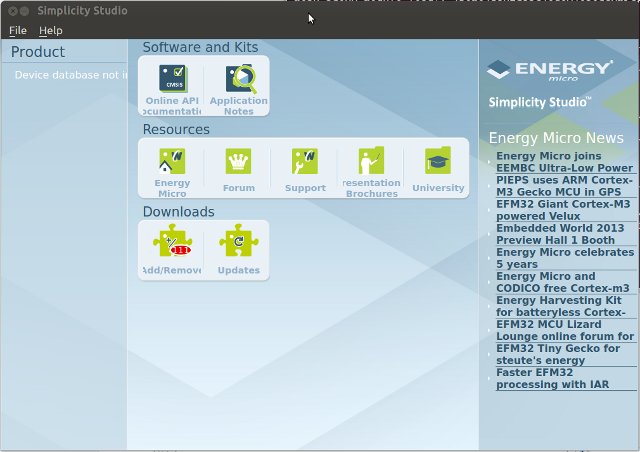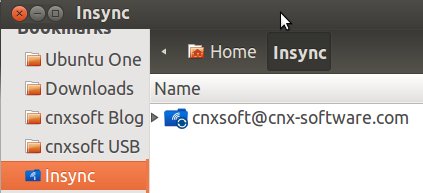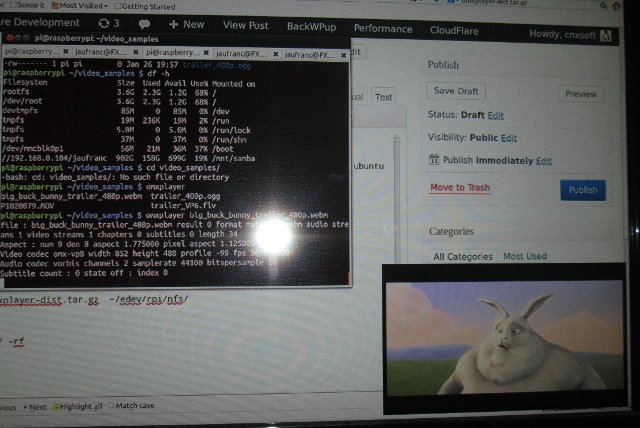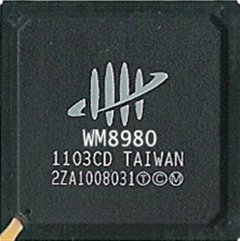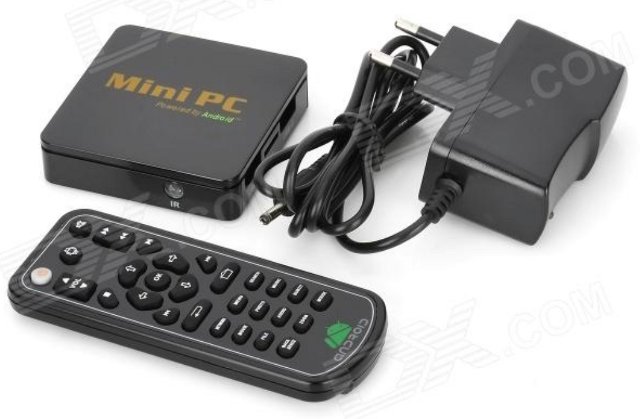Linaro has just announced release 13.01 which includes Linux Kernel 3.8-rc4 and Android 4.2.1. A lot of work seems to have gone in Arndale board and OpenEmbedded ARMv8. It’s the first time an Ubuntu image is released for Arndale Cortex A15 development board. One the kernel side some Android upstreaming work has been done, as well as some fixes for eMMC, and code for ST Ericsson Novathor 8500 SoC has been reorganized. Version 14 of the big.LITTLE MP (Multi Processing) has been released. The LEG has done further work on Linaro UEFI and GRUB. Here are the highlights of this release: Android Platform Work The first step of the android-build front-end update for new build program has been landed. Origen and Versatile Express manifests have been consolidated into a single manifest. linaro-android-tools were developed to improve development time for kernel developers. See Kernel Update Tools for details. The android-build scripts […]
ARM MCU Development in Linux with Energy Micro’s Simplicity Studio, Eclipse, and CodeSourcery Toolchain
Quite a few months ago, I received an Energy Micro EFM32 Tiny Gecko Starter Kit, but I haven’t done much with it. But recently I saw a tweet from EnergyMicro about Simplicity Studio supports for Ubuntu, and I know it can be problematic to find proper tools for ARM MCU development in Linux, so I decided to give it a try. The first part is about Simplicity Studio, and energyAwareTools which are specific to Energy Micro, but the second part deals with setting up Eclipse and CodeSourcery ARM toolchain for MCU development which should be reusable for other MCUs from vendors such as Texas Instruments, NXP and STMicro. I’ve used a PC running Ubuntu 12.04 64-bit with the instructions below. Installing Simplicity Studio and energyAwareTools in Ubuntu Simplicity Studio is part of the 4 steps of the getting started guide with EFM32 MCUs. It has been available for Linux for […]
XBMC 12.0 Frodo Stable Release
XBMC developers have just announced the release of XBMC 12.0 (Frodo) which is available for desktop platforms (OSX, Linux / Ubuntu, Windows), Apple TV, iOS, Android (HW support limited), and even as a specific build for the Raspberry Pi. Other key features for this release include: HD audio support, including DTS-MA and Dolby True-HD, via XBMC AudioEngine Live TV and PVR support h.264 10bit (aka Hi10P) video software decoding for anime 64bit support in OSX to match the 64bit support in Linux Improved image support, allowing the database to accommodate numerous additional image types and more interesting and complex skins Improved AirPlay support across all platforms, including AirPlay audio in XBMC for Windows to match the other platforms Improved controller support in Windows and Linux Advanced Filtering in the library Video library tags to complement movie sets Advanced UPnP sharing Default video languages now match the language being used by XBMC Translations […]
Google Drive Integration in Ubuntu with Insync
There are several ways to get cloud storage in Ubuntu, and access it from Nautilus with products such as Ubuntu One or Dropbox. But if you’re running out of space with those services, you may also consider using your Google Drive account with Insync (Beta). Here’s how I’ve installed the latest version (0.9.35) in Ubuntu 12.04 64-bit:
|
1 2 3 4 |
wget http://s.insynchq.com/builds/insync-beta-ubuntu_0.9.35_amd64.deb sudo dpkg -i insync-beta-ubuntu_0.9.35_amd64.deb sudo apt-get install xdotool python-nautilus sudo apt-get install -f |
At this point, reboot or restart nautilus (“nautilus -q” in a terminal window). I’ve then used Dash to launch Insynq. This just launched insync website, and allowed me to register my Google Drive account. You should now see Insynq shows up in your home folder. It may be a good idea to add it as a bookmark as well. At this point, you should realize something is not working that well since Insync does not show in the contextual menu. That’s because you need to run insync manually in a terminal window, […]
Marvell SMILE Plug DevKit is Now Available for $199
The SMILE Plug is a development kit, designed jointly by Marvell and Standford University, that brings Wi-Fi connectivity to a classroom, and allows up to 60 pupils / students to interact with their teacher via their phones’ or tablets’ web browser. Other possible applications include cloud computing, wireless AP, industrial control, medical instrumentation, office automation, as well as mesh and grid computing. The SMILE Plug is now available with the following updated specifications: SoC – Marvell ARMv7 compliant Marvell ARMADA 370 CPU System Memory – 512 MB DDR3 Storage – 1 GB NAND Flash + microSD slot Connectivity WiFi 802.11 a/b/g/n via Marvell Avastar 88W8764 4×4 WiFi for up to 60 nodes 2x Gigabit Ethernet USB – 2x USB 3.0 External backup battery for hours of reserve power* (optional accessory) Power on button and restart Power Supply – 12V/2amp external power supply JTAG and UART port for programming and debugging […]
Raspberry Pi Now Has Experimental Support for VP6, VP8, MJPEG and Ogg Theora Video Codecs
The guys working on the Raspberry Pi (mainly dom) have added preliminary support for VP6, VP8, MJPEG, and Ogg Theora free video codecs, as well as Ogg Vorbis audio codec. Unlike H.264, MPEG-2 and VC1, those are not handled by the hardware video decoder in Broadcom BCM2835 processor, but are accelerated by the Videocore GPU. This means that only SD (and possibly 720p) videos are supported for those codecs. The best way to get support is probably to patiently wait for the Raspberry Pi foundation to release a new Raspbian image, but in case you couldn’t possibly wait, here are the steps to follow: Download and run Hexxeh’s rpi-update script in the Raspberry Pi in order to get the very latest build:
|
1 2 3 |
wget https://github.com/Hexxeh/rpi-update/raw/master/rpi-update chmod 755 rpi-update sudo ./rpi-update |
Add the following two lines to /boot/config.txt:
|
1 2 |
start_file=start_x.elf fixup_file=fixup_x.elf |
Reboot the Raspberry Pi The GPU firmware is now updated, but you still need the latest version of omxplayer. […]
WonderMedia PRIZM WM8980 Dual Cortex A9 SoC
WonderMedia Technologies, a subsidiary of Via Technologies, has recently announced the WonderMedia PRIZM WM8950, a dual core Cortex A9 processor running up to 1.2 Ghz with a Mali-400MP2 GPU. This new SoC supports Android 4.2 Jelly Bean, Linux, and WinCE 7, and targets applications for mobile, digital home and business applications in devices such as tablets, smart TVs, networked projectors, digital signage players, and thin clients. It also features integration of the Wi-Fi CERTIFIED Miracast standard into the WonderMedia SmartStream for support of DMR (Digital Media Renderer) and wireless display functionalities over standard compliant and legacy WiFi direct and WiFi devices in both embedded and Android environments. WM8980 supports HDMI, LVDS, and DVO video interfaces, features a CMOS sensor input for webcams, SD / SDIO / MMC / e-MMC interfaces, USB 2.0 Host/device, audio interfaces (I2S, S/PDIF, PCM), SPI, I2C, UARTs and GPIO. Wi-Fi and Bluetooth can be supported with […]
$59.40 HD18M Android 4.0 Media Player Powered by AMLogic AML8726-M3
Mygica A11 ($65) was the cheapest AMLogic AML8726-M3 Android set-top box I was aware of, but today I’ve come across HD18M with very similar specs (e.g. 1GB RAM, 4GB Flash…) that sells for $59.40 on DealExtreme including shipping. Here are HD18M Android STB Specifications: SoC – AMLogic AML8726-M3 (Cortex A9) processor @ 1.0GHz with Mali-400 GPU System Memory – 1GB DDR3 Storage – 4GB Flash + microSD slot (Up to 32GB) Video Output – HDMI 1.4 (Up to 1080p) Video Formats – AVI, RM, RMVB, TS, VOB, MKV, MOV, WMV, ISO, ASF, FLV, DAT, MPG & MPEG Video Codecs – MPEG1/2/4, H.264, AVC/VC-1, Xvid ,DivX3/4/5/6, and Real Video 8/9/10 Audio Formats – MP3, WMA, WAV, OGG, FLAC, ALAC, APE, TrueHD, AAC, AC3, AC-D, DDP & DTS. Subtitle – srt, smi, ssa and ass USB – 2x USB 2.0 Host ports Connectivity – 10/100 Mbit Ethernet + Wi-Fi 802.11b/g The only […]



